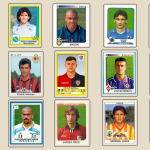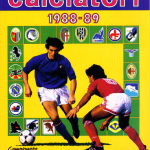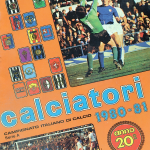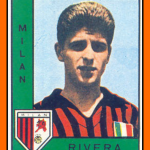
How the aesthetics of Panini stickers has changed over the years
Started almost by accident in the early 1960s, tradition now meets the modernity of digital and NFTs
February 15th, 2022
Ever since the Panini brothers of Modena bought an old batch of stickers from the Nannina editions and resold them in convenient packs at 10 lire each, the Panini album has accompanied and defined the aesthetics of Italian soccer. The gluing ceremony, the painstaking attention to the edges, the market for duplicates; the stickers tell the story of the faces and generations of the Italian championship like nothing else, and in Italy the stickers are synonymous with Panini. The first album dating back to the 1961-62 season is nowadays to be considered as a real heirloom for collectors, and is what can be considered as the real birth of the world of collectibles in Italy. A history that has crossed the ages, constantly renewing itself and remaining a bridge between new and old soccer fans.
How the covers have changed over the years
From a visual point of view, the great strength of the Panini football collections has always been that of having a clear recognizability, since the four-year period 1961-1964 when the face of the Swedish football star Nils Liedholm was used as the album cover. If nowadays it is normal to see the most famous football players associated with certain brands in order to increase their visibility, Panini adopted this reasoning in 1965 when, thanks to the cover depicting the bicycle kick by Carlo Parola, the sticker album became a true icon. From that moment on, the company was able to be recognized in all respects thanks to a footballer who could be defined as a true ante litteram testimonial.
Both Liedholm and Parola were able to make the Panini collection part of the collective memory of the Italian population and not only, so much so that the Modenese company had the luxury of changing the cover for subsequent editions, using contemporary champions instead, as for example in the 1983-84 1984-85 seasons where Zico, Platini, Falcao and Maradona were represented on the cover.
A bit like the cover of a fashion editorial, Panini has always wanted to leverage both the creativity and the chromatic impact of the covers themselves. In fact, the one for the 2007-2008 season features a style characterized by a defined color blocking of gray and red, even adopting the choice not to include any football player of note on the cover. It is important to note that for the current season, the cover with Carlo Parola's bicycle kick has been replaced with the image of a fan seen from behind, with the bicycle kick reduced in size and placed in the upper part of the cover. A choice that could be able to communicate the will to give great prominence to the fans, culturally considered as the real engine of this passion.
Aesthetics of the stickers
In the course of its sixty years of history, Panini has often decided to change the design of its figurines, starting from a reduced essentiality of the figurines of the 60's, passing through those of the 1970-71 season that portrayed the football players no longer half-length but full-length. To arrive at the 2011-2012 season, when it introduced a restyling of the same, adding on the sticker in addition to the half-length of the footballer and the palmares and nationality of the same, also the height and weight. This is a noteworthy innovation, since in the previous albums, such as those from the 1995-96 season to the 2010-2011 season, this type of information had to be found in some notes on the side of the page inside the album.
But a real revolution seems to have been introduced in the current season, because never in the past has Panini made so many aesthetic/visual changes. This year, in fact, every Serie A player is presented with a special sticker with a split between the classic half-length representation and a representation while he is performing an action in motion inside the playing area. But while it was decided to keep the canonical "tri-sticker" for Serie B, the real innovation concerns Serie C players.
Panini has decided to launch a virtual album to add the players of the Pro League to its collection, a very strong message that brings to include those who play in the minor leagues, but above all that aims to bring collectors closer to players who often go unnoticed. Bringing the audience closer to the players of the Serie C leagues will be possible thanks to the redemption of coupons and an exchange of virtual stickers on the Panini website.
The future of digital Panini collections
In the last year, the growth of digital platforms like SoRare has risked making many millennials who collected paper stickers during their adolescence lost their passion. So for the 2021/22 collection of football players, Panini has decided to take the practice of sticking stickers on an album to a higher level, because thanks to the emergence of a hyper-digitized world, even the most folkloristic of traditions risks being disrupted.
Who knows if the Italian company hasn't sent a signal to all intents and purposes to follow the phenomenon of SoRare and NFT. Looking to the future and adopting this perspective, the Panini company could be planning to enter the blockchain macrocosm as early as next year, presenting itself with a more than consolidated mark-up, and having on its side the fact that it has never had to employ great effort in obtaining licenses and various rights from the world of soccer.






































